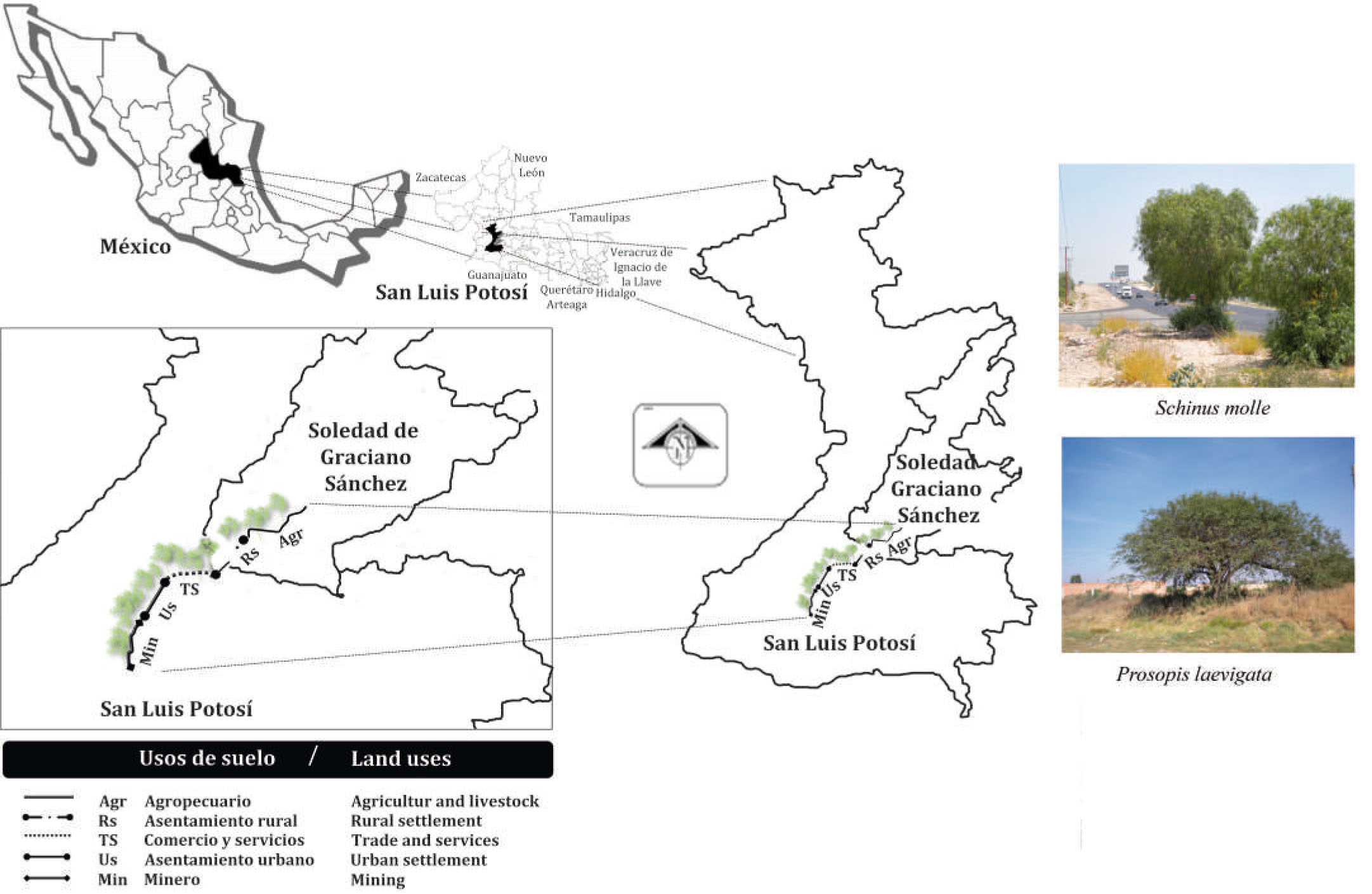Capacity of two vegetative species of heavy metal accumulation
Keywords:
pollution, foliar matter, land use, season, heavy metalAbstract
Habitat fragmentation allows for vegetative species to be used as indicators of environmental pollution by heavy metals. Considering the distribution of Prosopis laevigata (mesquite) and Schinus molle (pepper tree) heavy metal concentrations were determined as potential indicators of environmental impact assessment for agricultural and livestock, rural settlement, commercial and service, urban settlement and mining land uses. A total of 30 sampling points were established during summer, autumn, winter and spring, based on the presence of the two species. Applying the technique of ICP-MS, concentrations of Al, As, Co, Cu, Cd, Pb, Ti, V and Zn were determined. With a statistic model the interactions between species, type of land use and season with respect to the concentration of these minerals in the leaf material were determined. Results indicated that the presence of heavy metals is determined by the effect of the species, land use and season, and the possible association between these. The specie of mesquite was the most efficient for bioaccumulation of Pb, Co and Al. In the same way, the pepper tree was more efficient with respect to Ti. On one hand, trees located in the mining land use showed the highest concentrations of Cu, Zn, Cd, Pb, Co and As. On the other hand, the spring season presented the highest concentration of Cu, Zn, Co, Ti and V. With that, it could be demonstrated that As, Co, Cd, Pb, Ti and Zn concentrations were above the normal limit. Therefore, the dynamics and functionality, environmental factors and physiological differences to develop physical-chemical processes in the absorption and transport of these elements towards the leaves are a determining factor of vegetative species placed under conditions of fragmentation, are good elements for surveying on pollution and environmental impact.
Downloads

Downloads
Published
How to Cite
Issue
Section
License
Aquellos autores/as que tengan publicaciones con esta revista, aceptan las Políticas Editoriales.










.jpg)




